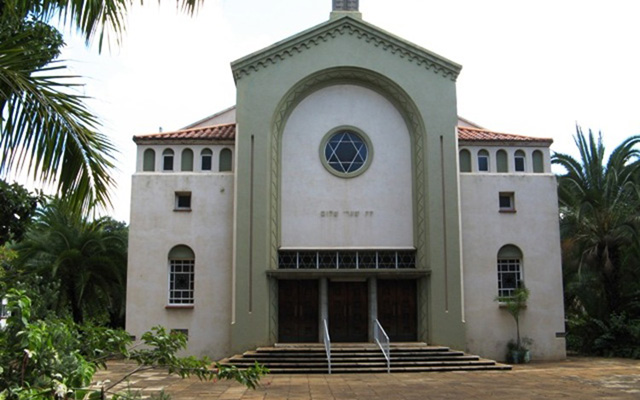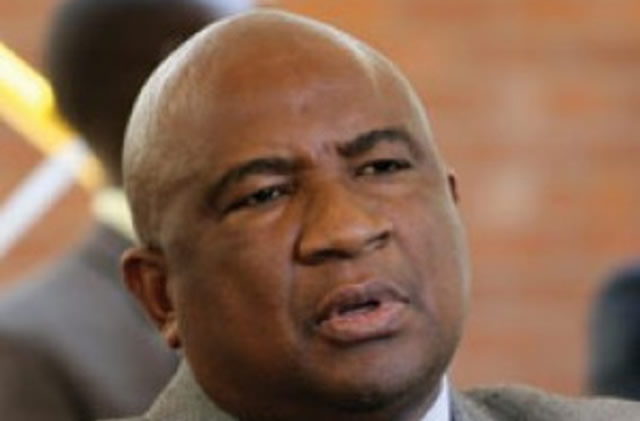Judaism depressed by generation gap


A Jewish synagogue in Harare. — (skynet osu edu)
Musavengana Hove : Features Correspondent
A white synagogue by the intersection of Leopold Takawira Street and Josiah Chinamano Avenue in Harare stands out for its classic design and careful maintenance. From a panoramic view, the Jewish holy place radiates centuries of strength. But if the architecture evokes the tradition of Zerubbabel, the Hebrew builder, the inside view is not as inspiring.The synagogue which used to be traditionally frequented by Judaisers at the stipulated worship hours daily looks deserted.
Attendance of Jewish services throughout Zimbabwe is reported to be hitting an all-time low as young congregants are leaving the country .
While other faiths are steadily replenished through outreach efforts, the oldest Abrahamic religion’s mainstay is race rather than persuasion.
Those who affirm the faith are routinely referred to as Jews, a misnomer because the race is made up of both the orthodox and the secular. It is, however, an indication of the faith’s largely inward-looking model.
The Zimbabwean chapter of Judaism is increasingly demographically depressed as a significant of young Judaisers are going abroad either to pursue education or settle permanently.
Cities such as Gweru, Kadoma and Kwekwe which used to boast a substantial number of Jews have witnessed an exodus of the faithful.
Of the last remaining strongholds, Harare and Bulawayo, about two thirds of the congregants are aged above 65.
While 90 congregants worship at the two Jewish synagogues in Harare, less than 10 are regulars at the weekly services.
Harare Hebrew Congregation secretary and treasurer Bennie Wine revealed in a recent interview that it is difficult to assemble 10 men on Sabbath for the two main assemblies in the city centre.
“The majority that come are practising but aren’t religious, we see them once a year,” he bemoaned.
Benjamin, who identifies as orthodox told Herald Review that the Jewish tradition forbids less than 10 men to conduct a service.
“When we say men in the orthodox context, we normally refer to those over 13 years of age,” said Benjamin who is part of Jewish believers in Zimbabwe now shunning services.
Even with such an allowance, the demographic is hardly in evidence on the Sabbaths.
Traditional rites such of Bar Mitzvah, where young Judaisers are initiated into manhood at 13, are also becoming a rarity, owing to the demographic depression suffered by the faith.

The Star of David announces the Bulawayo Hebrew Synagogue. — (Bulawayo Memo)
As the number of faithful continues to dwindles, resolute congregants, now holding services jointly, are feeling the strain of the “youth exodus” on the community. Judaisers are predominantly drawn from but not limited to Jewish descent. A contingent of locals, traditionally known as God-fearers, are a significant part of the faithful.
Some of them are “black Jews,” natives of Zimbabwe who trace their ancestry to the house of David.
The depression in the number of the faithful, follows a trend in the global north whereby all major Abrahamic faiths are in decline and expected to continue losing members in the foreseeable future.
While the forecast is positive in the Global South, particularly Africa, with Christianity and Islam expected to register a boom concurrently with the continent’s population, Judaism seems to be an exception.
Zimbabwean Jews and the Holocaust connection
Judaism became a notable feature in Zimbabwe’s climate of belief in the 19th century.
The first group of Jews to find sanctuary in Zimbabwe was made up of the Ashkenazi Jews from Russia and Lithuania.
“Ancestors of members of our other church come from Mediterranean countries, Rhodes Island and others. Others come from Lithuania, Russia and Poland,” said Wine.
By 1900 an estimated 400 Jews were resident in the then Southern Rhodesia. A number of these invested in pillar economic sectors such as banking, retailing and agriculture.
By 1961, more than 7000 Jews were resident in the country.
The phenomenal increase is partly attributed to Nazi persecution which saw Jews leaving Europe for more friendly regions in the 1930s and 1940s.
Flawless assimilation of Jews into Rhodesia and the relative relaxation of traditions such as marring exclusively within helped expand the faith locally.
At the Shepherd Hebrew Congregation, one of the two congregations in Harare, documents show developmental inroads recorded by the Jews locally.

Rabson Wuriga secretary of the new synagogue in Mutuzu Masvingo at the building site. — (Al Jazeera)
“To serve and strengthen the Jewish community two Jewish Day schools one called Sharon School in Harare and one in Bulawayo called Carmel School. The community also owns sports clubs, Savyon old age home and sponsors several women organisations in the country,” reads one of the records.
Exodus
The recent exodus is not first as the group is somewhat synonymous with nomadic lifestyles and repatriation.
By the time Zimbabwe won her Independence from British rule in 1980, a number of the faithful had emigrated. Voluntary emigration saw a little more than a thousand remaining.
Some left for Israel for Jewish for cultural pursuits and marriage prospects.
An orthodox Jew who would not be named said some services are not graced by a rabbi due to the developments.
Lack of leadership in religion is often associated with disorientation, opacity of purpose and lack of collective vision.
The source said the local assemblies are up against trying times and need reconfiguration, direction and renewed expansion to soldier against the tide.
Audacity of tradition
Some believers are, however, resigned to fate and do not foresee a sustained presence of the faith in Zimbabwe.
For the faithful, it is not in the numbers but distinctive values and peculiar history that the religion is famed for.
Judaisers’ new year festivities, which normally falls in September, will fall October 3 according to their calendar.
“On the evening of October 2 we start our prayers. Then our New Year is on October 3 and 4. Ten days later we have the Day of Atonement where we fast for about 27 hours and pray for forgiveness of all sins we might have committed,” said Wine.
He continued that the congregants will also spend the whole day in the synagogue in line with cherished Jewish traditions in the world.
The Jewish community is still observing numerous holidays throughout the year such as the first fruits of the year and the Passover.
Pilgrimages to the holy places in Israel, the centre of the Jewish faith, are also a significant part of the faith.
Quick facts on Judaism in Zimbabwe
Approximately 400 Jews live in Zimbabwe, predominately in Harare and Bulawayo. Only a few Jews remain in Kwekwe, Gweru, and Kadoma. Two-thirds of the population is over retirement age of 65. Very few children remain in Zimbabwe, most have immigrated to Israel or South Africa, in search of economic opportunity and Jewish marriage prospects.
While most of the population is Ashkenazic, a strong representation of Sephardic Jews remains in the country. The last Bar Mitzvah in Zimbabwe took place early in 2006.
Both an Ashkenazic (1895) and Sephardic (1931) synagogue exist in Harare; furthermore, there is an Ashkenazic Orthodox synagogue in Bulawayo.
Daily services and Jewish holidays are celebrated in Harare, but since the early 2000s, both the Ashkenazic and Sephardic synagogues have joined forces for services to ensure a minyan. Rabbi Nathan Asmoucha of the Bulawayo Hebrew Congregation, is the country’s only rabbi. Jewish cemeteries can be found in Kwekwe, Harare, and Bulawayo.
The Zimbabwe Jewish Board of Deputies, located in Harare, is the leading communal organisation. Since the mid-1990s, groups of Bnei Akiva have been active in Bulawayo and Harare.
Furthermore, despite the small number of Jewish youth present in Zimbabwe, Zionist youth organizations are active. Two Jewish schools exist in Zimbabwe: Carmel in Bulawayo and Sharon in Harare.
Both schools have a large percentage of African and Indian students, along with local Jewish children. There also exists in Bulawayo, the only Jewish home for the elderly in Zimbabwe, called Savyon Lodge.
A shochet comes twice a year from South Africa, but with a lack of animals available as a result of rationing of meat. The Bulawayo Hebrew Congregation began in 1894, in a canvass tent with barely 20 members. The congregation is based on the traditions of the Ashkenazi Orthodox.
On May 17, 1910, the first stone was laid for the construction of a new community synagogue, which was consecrated in April 1911. Over the years, the community has fluctuated in numbers, reaching a maximum in the 1950s of a few thousand.
On October 5, 2003, the day before Yom Kippur, the historic synagogue burned to the ground. Just as the community’s new rabbi, Nathan Asmouch, arrived, the community lost its spiritual heart. The Bulawayo Hebrew Congregation synagogue was reconstructed, however, and Jewish communal life continues in Bulawayo. The Harare Hebrew Congregation is an Ashkenazi community. The congregation was founded on June 2, 1895, by twenty men and two women. The community was first led by Joe van Praagh, who five years after the congregation’s establishment became the first Jewish mayor of Harare. In 1901, the first synagogue was built on Rhodes Avenue with 70 members.
Jews began settling in Kadoma in the early 1900s. By the late 1930s, 25 to 30 Jewish families resided in the local area of Kadoma. Prior to World War II, no formal congregation was formed, with services being led by laymen on the High Holidays.
In 1945, with the arrival of new immigrants from Europe, the Kadoma Congregation was officially organized. After years of holding services and communal activities in various places, the Kadoma Congregation synagogue was erected in 1953.
In 1956, Robert Sternberg became Kadoma’s first Jewish mayor. By the late 1950s and 60s, much of the Jewish community began to leave Kadoma due to economic trouble. The last minyan with the Kadoma Congregation occurred in 1979. Today, fewer than 20 Jews remain in the city, with no children. — The Virtual Jewish World










Comments